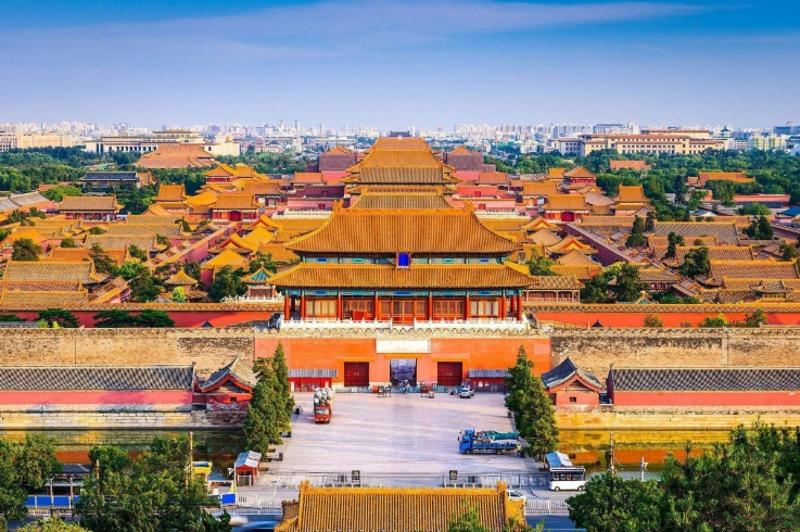The Forbidden City
The Forbidden City: Fusion of History and Culture
I. Historical Background of the Forbidden City
The Forbidden City, also known as the Palace Museum, is located in the heart of Beijing, China. It served as the imperial palace during the Ming and Qing dynasties. Construction of this grand palace complex began during the early Ming dynasty, specifically in the Yongle era, and was meticulously built over several decades, finally completed in the 18th year of the Yongle reign (1420). It served as the residence and political center for emperors, witnessing the rise and fall of the Ming and Qing dynasties and carrying a rich historical and cultural significance.
The Forbidden City is not only a masterpiece of ancient Chinese architecture but also a microcosm of feudal society, encompassing politics, culture, and art. It was the venue for imperial ceremonies, the promulgation of laws, and the handling of state affairs. Additionally, it served as a cultural hub where numerous literati and artists left behind invaluable cultural legacies.

II. Distinctive Attractions of the Museum
Today, the Forbidden City has been transformed into a museum, presenting the former imperial palace in its entirety to the world. Notable attractions include the Hall of Supreme Harmony, the Palace of Heavenly Purity, and the Hall of Clocks.
The Hall of Supreme Harmony is the most magnificent building in the Forbidden City and served as the venue for grand ceremonies conducted by emperors. Situated on a three-tiered platform made of white marble, its roof features multiple eaves and is adorned with yellow glazed tiles that shimmer under sunlight, exuding an aura of imperial majesty.
The Palace of Heavenly Purity served as the residence of emperors and boasts luxurious interior decorations, reflecting the opulence and grandeur of the imperial family. Each item within is steeped in history, inviting visitors to envision the lives of emperors from centuries past.
The Hall of Clocks houses a collection of exquisite ancient timepieces, showcasing the superb craftsmanship and ingenuity of artisans from antiquity. These clocks not only hold significant artistic value but also reflect the technological advancements and lifestyle of ancient times.
III. Visitor Experience
Visiting the Forbidden City is an unforgettable experience. Strolling through its halls feels like stepping back in time to an era of splendor and magnificence. Visitors can witness precious artifacts firsthand and immerse themselves in the historical ambiance they exude. Moreover, they can delve into the architectural styles, cultural significance, and historical background of the Forbidden City to gain a deeper understanding of China's traditional culture.
During the visit, consider joining guided tours where knowledgeable guides provide detailed explanations of each attraction's history and cultural significance, allowing for a more immersive experience. Additionally, visitors can enjoy court performances and exhibitions within the Forbidden City, further immersing themselves in the lifestyle and artistic charm of ancient royal culture.
IV. Historical and Cultural Value
The historical and cultural value of the Forbidden City is immeasurable. It not only represents the pinnacle of ancient Chinese architecture but also serves as a vital carrier of traditional Chinese culture. Through visiting the Forbidden City, one can gain a better understanding of the history, culture, and art of ancient Chinese society, experiencing the greatness and creativity of the Chinese nation.
Moreover, the Forbidden City embodies the traditional virtues and spiritual essence of the Chinese nation. Visitors can perceive the cultural atmosphere of reverence for tradition and adherence to etiquette, experiencing the cohesive force and centripetal power of the Chinese nation.
V. Travel Tips
If you plan to visit the Forbidden City, here are some suggestions: Firstly, make sure to book tickets in advance to avoid long queues. Secondly, adhere to the museum's regulations during the visit, refraining from touching artifacts or using flash photography to protect these precious cultural heritage items. Additionally, to better understand the history and culture of the Forbidden City, it's recommended to study relevant materials or join guided tours before visiting.
Lastly, don't forget to bring a camera to capture the beautiful moments within the Forbidden City. Whether it's the grand architecture, exquisite artifacts, or historical scenery, each aspect is worth cherishing.
In conclusion, the Forbidden City is a museum brimming with historical and cultural significance, awaiting your visit to explore the brilliance and splendor of ancient China. Here, you will embark on an unforgettable journey and gain a deeper understanding of the profoundness of Chinese traditional culture.